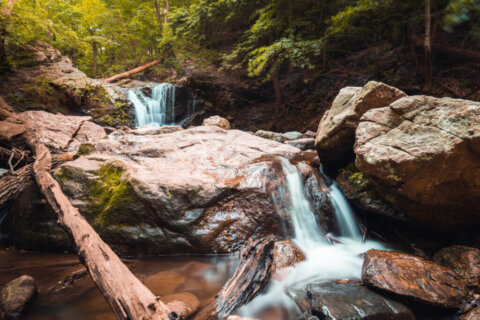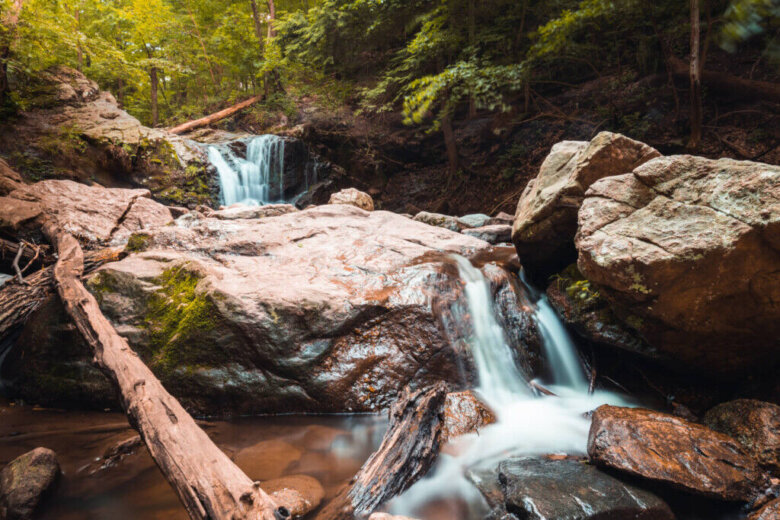This article was republished with permission from WTOP’s news partners at Maryland Matters. Sign up for Maryland Matters’ free email subscription today.

This content was republished with permission from WTOP’s news partners at Maryland Matters. Sign up for Maryland Matters’ free email subscription today.
To address the surge of visitors in Maryland’s state parks during the pandemic, state lawmakers are introducing a proposal that increases staffing, expands recreational amenities and improves equity of access.
“You [can] talk to any [park] ranger in the system in any part of the state of Maryland, and they will tell you — they’re struggling to keep up with just the basic tasks of park maintenance,” Del. Eric Luedtke (D-Montgomery) told the Appropriations Committee last week.
As the COVID-19 pandemic shuttered restaurants and gyms and forced people inside to self-quarantine and abandon travel plans, trips to state parks became a respite for many.
Unprecedented crowds visited Maryland parks during the pandemic, reaching a peak of more than 21 million visitors across 75 state parks in 2020. In 2020, park rangers were forced to close 14 state parks 292 times, which was triple the amount of times they had to turn away visitors in 2019.
But the number of visitors to state parks has been increasing for the last decade and the pandemic only helped highlight that parks are an essential service provided by the government, Dean Hughes, the president of Maryland Rangers Association, said in an interview.
“There’s a whole series of challenges that we’re confronting with the parks, which are solvable,” Luedtke said.
Luedtke said he will introduce the “Great Maryland Outdoors Act” with Sen. Sarah Elfreth (D-Anne Arundel) this year — a bill resulting from the recommendations proposed by the State Park Investment Commission, which the lawmakers co-chaired. The panel has been studying how to improve Maryland state parks since August.
In its final report, the commission recommended that the Department of Natural Resources hire 100 more full-time staff within the Maryland state park system over the next two years to help meet increased demand.
“We saw people everywhere,” Hughes said. “People were finding every nook and cranny to park.” Park rangers soon became “the jack of all trades,” responsible for opening the park, cleaning the park, supervising employees and now regulating traffic in overcrowded parking lots, Hughes said.
“Staff is stuck in a very long routine of just directing traffic, telling people to keep moving — and that’s not a great service. We’re not engaging with the public in a positive way,” Hughes said. “Right now, we’re doing only the mission critical necessities [of maintaining a park].”
Adding more staff would allow park rangers to interact with visitors, teach them about the park and keep them safe, Hughes said.
“There are incidents that have occurred in parks that could be deterred had there been more visible uniformed staff on site throughout the area — it provides a calming reassurance to people,” Hughes said.
More staff would also free up time to restore historical sites and fix aging infrastructure, he said.
Although there is an existing pipeline to recruit new park rangers, Luedtke said the state needs to do a better job recruiting women and people of color. The state park system also needs more historic trade workers, who are trained in properly preserving historic structures and materials, Luedtke said. The commission recommended that the state establish a historic trades corps program.
The bill will also invest more into cultural and historical sites and establish a new state historical park called Freedman State Historical Park in Montgomery County, Luedtke said. Enoch George Howard was an enslaved man in Montgomery County who purchased his own freedom and donated land for one of the first Freedman schools in the county, according to Luedtke.
The state park investment commission also recommended that the state immediately fund and prioritize staff to address the large backlog of critical maintenance projects over the next three years. The Critical Maintenance Program has been backlogged by $63 million for 551 projects, according to the commission’s report. “There are projects that have been in the pipeline for years that we need to fund,” Luedtke said.
These projects include upgrading restrooms, renovating visitors centers and park gates and replacing aging cabin roofs.
“Rangers and maintenance personnel across the state spend so much time trying to hide facility breakdowns or the imperfections and put Band-Aids on aging infrastructure,” most of which were built 60 years ago, Hughes said. “The historic investment in the critical maintenance backlog…is going to be game changing.”
The state park commission also recommended that the Maryland Department of Transportation extend bus routes in Baltimore during the summer to expand public transit options to state parks and to have weekend shuttle service to state parks.
There used to be a trolley line that ran from the city of Baltimore to the North Point State Park in Baltimore County, Luedtke said. The state could turn that land into a trail so those living in the city could bike to and from the park, he said.
The state should also commit to a goal to conserve at least 30% of Maryland’s land and waters by 2030, which is a federal goal proposed by the Biden administration, according to the commission’s report. They also recommended more funding towards green infrastructure in state parks to help mitigate climate change.
“This is the most exciting thing that has happened to state parks since the 1950s and 1960s, which is the last time that Maryland state planners were really in a mode of building new parks,” Hughes said.








